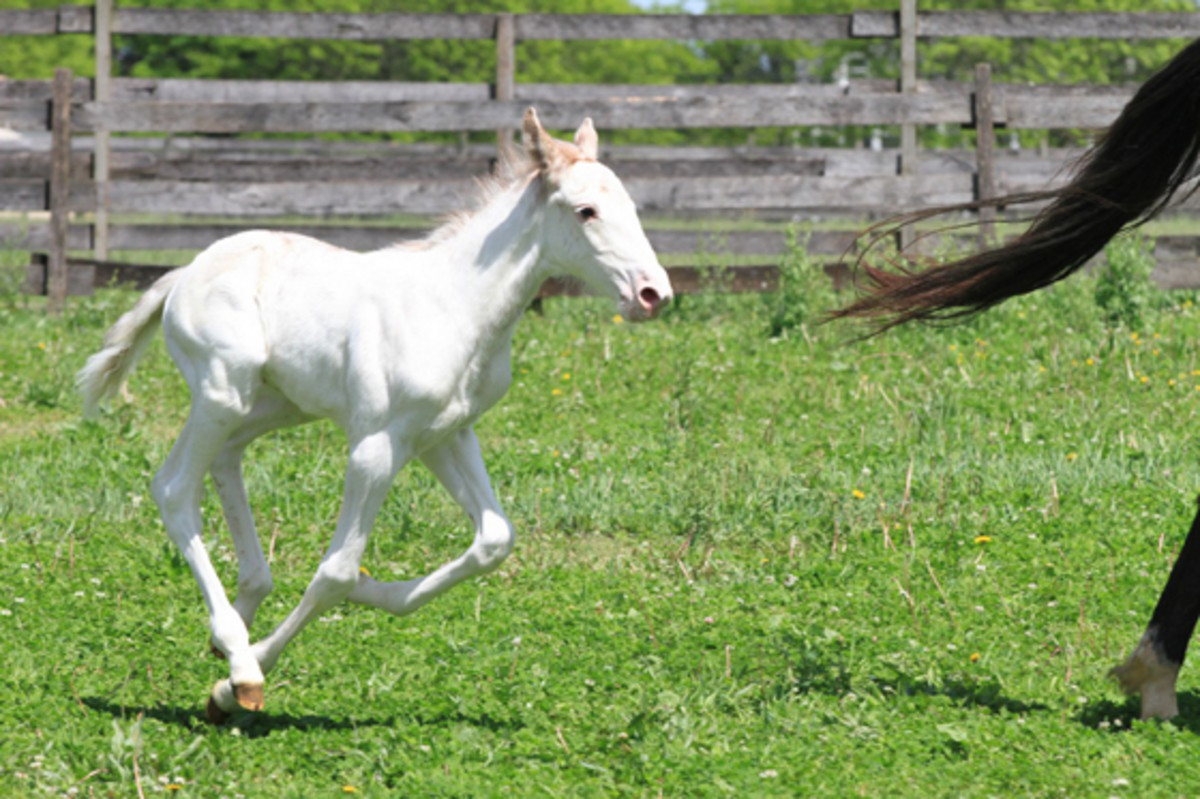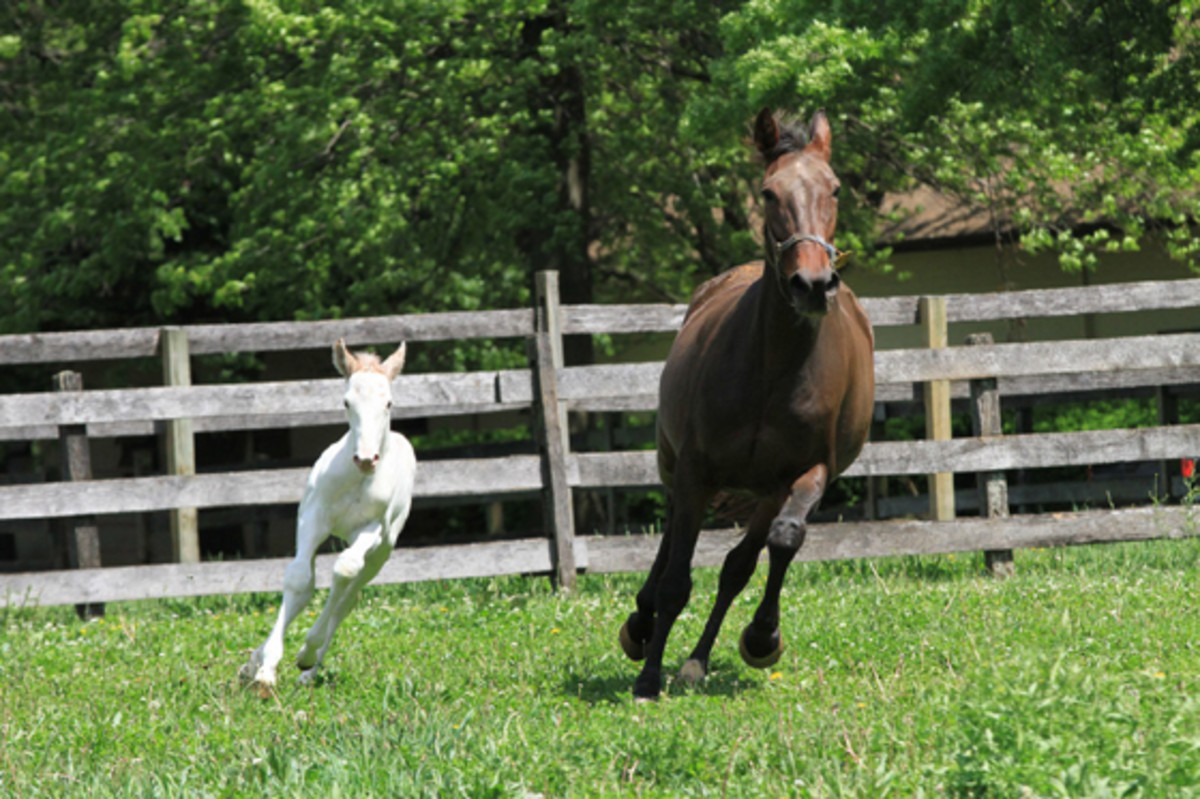Each year, about 10,000 Standardbred foals are born in North America. Almost to a letter, they are bay or brown.? Occasionally, greys and chestnuts enter the world but the color variation found in other breeds just isn’t found in Standardbreds.

They wear numbers when they’re racing, and many fans are glad they do.
May 6, 2012 was the exception of a lifetime for Standardbred owner Peter Congilose. On that day, his bay mare, Coochie Mama, gave birth to a white colt by the bay stallion and former champion, Art Major.
Born at Fair Winds Farm in Cream Ridge, New Jersey, the unusual colt has a sprinkling of reddish brown between his ears and on his mane.
United States Trotting Association (USTA) registrar Janet Terhune has confirmed that the white foal is, in fact, the progeny of Art Major and Coochie Mama and that no interloping stallion was involved.? “DNA testing indicates that Art Major and Coochie Mama qualify as parents of the white foal,” says Terhune.? “Parentage verification is a requirement of all Standardbreds before they can race, have registered progeny, or transfer ownership.”

There have been about 200,000 Standardbred foals born of bay parents since the birth of a white filly named Historically Unique in Ontario on April? 30, 1998.? Racing fans and horsemen could easily go a lifetime and never see a white Standardbred.
Samantha Brooks, PhD, assistant professor and research geneticist at Cornell University’s Department of Animal Science’s Brooks Equine Genetics Laboratory, says that the most likely root of this rare white foal is a genetic mutation.? “It is literally spontaneous,” says Brooks.? “There are about 14 different unique mutations in a gene called KIT.? For a reason we don’t fully understand, many of these spontaneous white horses have one of these KIT mutations.
“We don’t know why it happens so frequently in this one gene when there are literally dozens that could cause the same pattern, but in the horse that seems to be most often changed.? Having the color between his ears, that is typical of a KIT mutation.? That is because the melanocyte precursors, the ones that are going to be producing colors, come from a place called the neural crest which runs down the? mane.”
Brooks says the sprinkling of red will likely stay with the colt.? “It will probably stay with him, but they don’t expand as they grow,” says Brooks.?? “Frequently they (the colored hairs) get lighter and more diffuse as they get bigger since they aren’t proliferating to cover a larger horse as they would in a normal horse.”
Should this white foal become a commercial sire, Standardbred fans may see a lot more white sprinkled in race fields, says Brooks.? “If it does turn out to be a KIT mutation, which is the mostly likely explanation, it’s a 50/50 chance [his progeny will be white].? He should have one copy of his KIT gene with this new allele on it, a new version, the other copy will be normal.”
Owner Congilose is not yet sure if he will keep the colt or sell him at public auction, where the market is often not kind to horses of a different color.? “I have no idea how he’d be received at the sales,” he said.? “From a buyer’s perspective, he’s got four white feet, he’s got white legs – all those superstitions come in.? My thoughts are he probably wouldn’t be received that well at the sales, so I’m more than happy to keep him and race him and I hope he becomes a great stallion.”
This story was adapted from a news story provided by Ken Weingartner and Ellen Harvey of the USTA.








